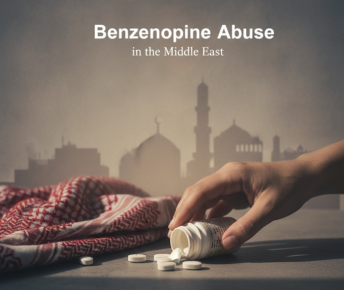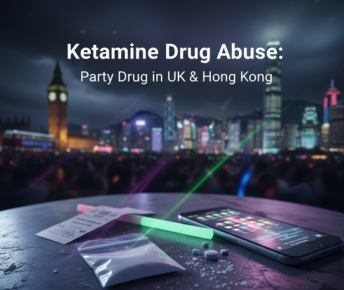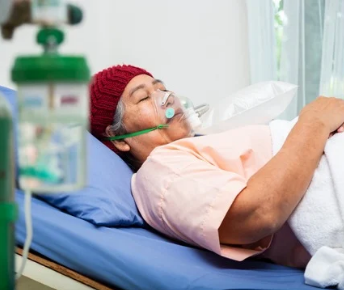Introduction
Substance abuse is a complex challenge that affects millions of lives, and overcoming it requires more than just willpower. Many people struggling with addiction face more than one issue at a time, making recovery even more complicated because the different problems often affect and worsen each other. For example, substance abuse, at times, can create new challenges like physical health problems, emotional distress, or social difficulties, while existing issues can drive someone to use substances as a way to cope. This overlapping of problems means that treating just one issue isn’t enough. A comprehensive and evidence based approach that addresses all aspects is necessary for lasting recovery.
This is where dual diagnosis comes in. A condition where substance use disorder overlaps with other related difficulties. Dealing with dual diagnosis isn’t a one-size-fits-all situation. It takes a variety of treatments carefully matched to what each person needs. To really support someone on this journey, we first need to understand what’s causing these struggles, spot the signs early, and know the best ways to help. So, let’s take a closer look at what dual diagnosis is all about and how it can be treated.
Understanding Dual Diagnosis and its Signs for Effective Treatment
Dual diagnosis is a condition where a person experiences both a mental health disorder and a substance use disorder at the same time. This means they could be dealing with challenges like anxiety, depression, or bipolar disorder alongside alcohol or drug dependency. What makes dual diagnosis particularly complicated is how these conditions interact because substance use can worsen mental health symptoms, while mental health struggles might lead someone to turn to substances as a way to cope.
Recognizing the signs of dual diagnosis early is crucial for getting the right support and beginning effective dual diagnosis treatment. Some common signs to watch out for include:
- Mood swings or extreme emotional reactions: Sudden changes in mood or feelings that don’t seem connected to what’s happening around them.
- Increased substance use despite problems: Continuing to use drugs or alcohol even when it’s harming relationships, work life, or health.
- Withdrawal from family and friends: Pulling away socially and losing interest in activities that were once enjoyable.
- Difficulty managing daily tasks: Struggling with responsibilities at work, school, or home, often due to overlapping symptoms.
- Physical changes: Altered sleep patterns, appetite shifts, or unexplained aches and pains.
By understanding these signs, individuals and their loved ones can seek specialized treatment centers that offer integrated care addressing both mental health and substance use together.
CONSULT HERE
What Are the Causes of Dual Diagnosis?
Understanding why dual diagnosis happens helps in creating effective treatment plans. Several factors contribute to the development of both substance use disorder and mental health conditions:
- Genetic predisposition: Some people inherit a higher risk for mental illnesses and addiction.
- Environmental factors: Stressful life events, trauma, or living in an environment where substance abuse is common can increase the chances of dual diagnosis.
- Self-medication: People suffering from untreated mental health disorders sometimes use drugs or alcohol to relieve symptoms, which can lead to addiction.
- Brain chemistry changes: Both substance abuse and mental illness can alter brain chemistry, making it harder to break the cycle without professional treatment.
- Lack of early intervention: Without timely care, mild symptoms can escalate into more serious conditions that coexist.
Why Dual Diagnosis Treatment is Different and Key Approaches to Recovery
Traditional rehab centers often focus solely on either the addiction or the mental health disorder, leaving important issues unaddressed. Dual diagnosis treatment, however, means treating both conditions simultaneously. This integrated approach significantly improves the chances of a successful and lasting recovery.
Also read: Supporting Mental Health: Dual Diagnosis Rehabs In Pune
This begins with a comprehensive assessment that thoroughly evaluates both substance use history and mental health status. From there, personalized treatment plans are created, combining therapy and medication tailored to each patient’s unique needs. A collaborative care team including psychiatrists, psychologists, addiction counselors, and medical professionals, works together to provide holistic support.
The treatment ;es beyond just detoxification; it focuses on long-term recovery by incorporating therapy, skill-building, and support groups that help patients maintain sobriety and mental wellness.
Here are some key components commonly used in dual diagnosis treatment:
1. Medical Detoxification
Safely managing withdrawal symptoms under medical supervision is the crucial first step. Detox clears the body of substances and prepares patients for further therapy.
2. Psychotherapy
Therapies like Cognitive Behavioral Therapy (CBT), Dialectical Behavior Therapy (DBT), and motivational interviewing help patients understand triggers, develop coping skills, and work through underlying mental health challenges.
3. Medication Management
In many cases, psychiatric medications are prescribed to manage symptoms such as depression, anxiety, or bipolar disorder. These medications also support recovery by reducing cravings and stabilizing mood.
4. Group and Family Therapy
A strong support system is vital. Group therapy provides peer encouragement, while family therapy helps rebuild relationships and educates loved ones about dual diagnosis.
5. Aftercare and Relapse Prevention
Recovery doesn’t end when treatment does. Aftercare programs, ongoing counseling, and relapse prevention strategies play a critical role in sustaining progress and preventing setbacks.
Prevention of Substance Abuse and Providing Caring Patient Support
Preventing substance abuse, especially for those dealing with mental health challenges, is something we all need to take seriously. With the right awareness, early help, and access to care, it’s possible to reduce the chances of someone struggling with both issues at once.
Here are some simple but important ways to help prevent substance abuse:
- Regular Check-Ins: It’s important to keep an eye out and screen for substance use regularly, so problems can be spotted early.
- Learning Healthy Coping: Teaching people how to manage stress and handle tough emotions can stop them from turning to drugs or alcohol.
- Strong Support Systems: Having family, friends, or community around to lean on makes a big difference in staying on track.
- Easy Access to Help: When mental health and addiction services are affordable and easy to reach, more people get the help they need sooner.
But when prevention isn’t enough, the way someone is cared for can make all the difference. Providing a safe, respectful, and supportive patient care in hospital is something that can make them feel truly seen and cared for at every step is essential.
Here’s what ;od patient care looks like:
- Around-the-clock medical supervision with quick response to emergencies
- Personalized attention and regular updates on progress
- Support for nutrition and physical health to help strengthen the body
- Emotional and psychological care tailored to each individual’s needs
- Respect for privacy and dignity throughout the entire recovery journey
When prevention efforts are combined with compassionate, comprehensive care, every patient has a better chance at lasting recovery and a healthier future.
Conclusion
Dealing with dual diagnosis is definitely not easy, but understanding what it is and knowing the signs can be a real turning point. Recovery may feel overwhelming when facing multiple challenges, but with the right support, care, and treatment, it’s truly within reach.
Prevention is important, but when help is needed, compassionate care that sees and supports the whole person can make all the difference. With early recognition and the right approach, there’s hope for a brighter, healthier future, one step at a time.
Frequently Asked Questions
What type of treatment is most promising for dual diagnosis?
Integrated treatment that addresses both substance use disorder and mental health challenges at the same time is the most effective.
What is the most common dual diagnosis?
Depression or anxiety combined with substance abuse is one of the most common dual diagnoses.
What is the best example of a dual diagnosis?
Someone struggling with alcohol addiction and clinical depression is a clear example of dual diagnosis.
What is the integrated treatment for dual diagnosis?
It’s a coordinated approach that includes therapy, medication, medical care, and support systems to treat both conditions together.
























 Yes, many offer serene environments and solid therapeutic frameworks. However, quality varies, so it’s essential to research accreditation, staff credentials, and therapeutic depth.
Yes, many offer serene environments and solid therapeutic frameworks. However, quality varies, so it’s essential to research accreditation, staff credentials, and therapeutic depth.




